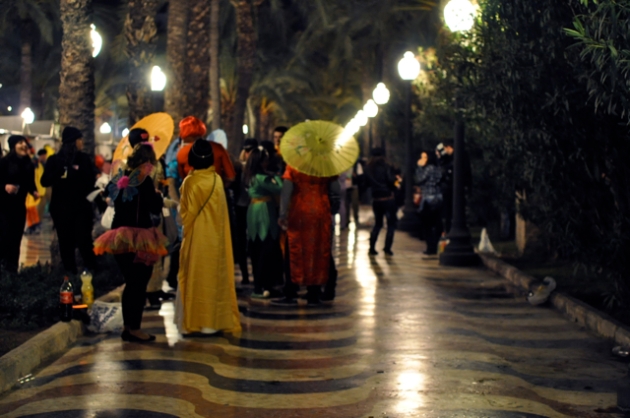As a Spanish teacher, I immediately began thinking of my culture lessons in 3 Acts. I already try to hook students with a fascinating image or video related to what we are learning about, and I always encourage guesses, questions, and discussions... but then I usually give them the questions that I want them to answer. If those questions were things they were actually interested in, they were driven by curiosity... and if not, they were driven by the grade carrot on a stick, if anything. In re-imagining these inquiries, I was drawn to the idea of having students drive the inquiry themselves.
I would like to adjust my culture lessons and apply some of the ideas behind the 3 Act math tasks:
- Act One: Introduce the central conflict of your story/task clearly, visually, viscerally, using as few words as possible.
- Leave no one out of your first act. It should be comprehensible to all levels. It should, as Dan Meyers says, get all students "right in the curiosity bone."
- Elicit questions from students, rather than handing them a list of questions.
- Act Two: The protagonist/student overcomes obstacles, looks for resources, and develops new tools.
- What resources do your students need to answer their questions? What tools do they need? What language do they need to answer their questions?
- Act Three: Resolve the conflict and set up a sequel/extension.
- The resolution should be a satisfactory payoff for students. (In Meyer's example task, he highlights the difference between actually seeing the basketball go through the hoop, and reading in the answer key - "The ball goes in.")
- Have students share the answers to their questions, and their process for finding those answers.
Many teachers are used to handing students questions, along with some set tools and formulas to answer those questions. In flipped classrooms and inquiry-based lessons, it is up to the students to select the tools they need to meet their objectives... and when students generate the questions themselves (after being motivated with a fascinating hook) they will be much more eager to find the answers. As a language and culture teacher, I want to develop independent language learners... and students who can independently find new information about other cultures, fueled by genuine curiosity.
I already am scheming up some new culture lessons in this format... I'm guessing my next attempt will be some inquiries about Semana Santa, perhaps starting with this great video. I'd love to hear from others, and perhaps collaborate on a database of resources. (Math teachers aren't the only ones who can collaborate!)











